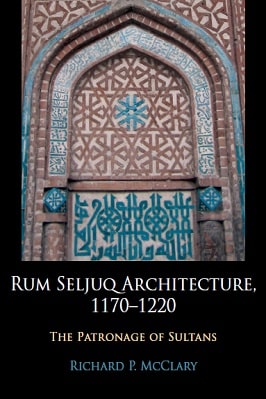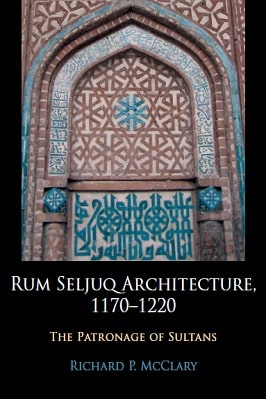
| Rum Seljuq Architecture |
| Richard P. McClary |
| 277 |
| |
| PDF Direct Download Link |
| Click for Hard Copy from Amazon |
Reframing the Alhambra
Rum Seljuq Architecture, 1170–1220 The Patronage Of Sultans by Richard P. Mcclary
RUM SELJUQ ARCHITECTURE
Books Preface
The genesis for this book was a trip to Turkey in 1991. That led to a life-long interest in the development of Islamic architecture in the region, and a desire to understand the diverse sources and webs of cultural interactions that occurred over the course of many centuries in Anatolia and the surrounding region.
It is a topic that occupied much of my postgraduate studies at the School of Oriental and African Studies in London, and was the focus of my doctoral research at the University of Edinburgh. Much of that work is included in this volume, which has resulted from the tireless support and encouragement of Professor Hillenbrand.
While I make no pretense to be a political historian, the lack of a concise overview of the origins and history of the Rum Seljuqs and their contemporaries led to the compilation of the narrative history that comprises the somewhat lengthy introduction to this volume.
This basic framework provides for a clearer understanding of the milieu into which the subject structures emerged.
The main aim in preparing this work was to present the most significant of the little known yet fascinating monuments built at the behest of the Rum Seljuq sultans and other elite patrons in Anatolia during the period to 1220.
Generally poorly published in any language, and in many cases virtually unrecorded in English, the study of these buildings provides an insight into the process and working methods of a period for which virtually no written sources with regard to architectural development survive.
With the exception of a photograph taken by Gertrude Bell and the images of three museum objects, all the images, cross-sections and ground plans are based on my fieldwork in Turkey.
Some of these images are themselves now part of the historical record, as somewhat over-eager restorations have resulted in the loss of much of the detail, especially in the Sivas hospital complex.
The study runs chronologically and attempts to address all the major materials and building typologies that survive from the period, but it is inevitable that certain elements have been missed out.
The lion’s share of the volume concerns the magnificent hospital and tomb in Sivas, a masterpiece of the stonemasons, bricklayers and tile-cutters arts, and one of the most spectacular Seljuq structures to survive in anything like its original form.
The final chapter builds on the structural analysis of the previous sections and is an attempt to explain the possible meaning inherent in the patterns, and the intentions of the patrons of the buildings.
Note: The border shown is a general guide to the extent of the sultanate. In reality the borders were more zonal than lineal. In addition to the land under territorial control, the military and commercial sphere extended irregularly beyond the area indicated on the map, particularly with regard to maritime trade.
To read more about the Rum Seljuq Architecture book Click the download button below to get it for free
or
Report broken link
Support this Website
for websites
